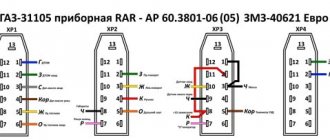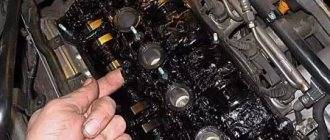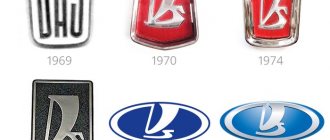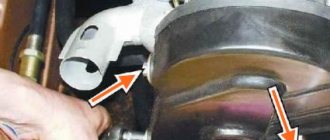Electric motors appeared quite a long time ago, but great interest in them arose when they began to represent an alternative to internal combustion engines. Of particular interest is the issue of electric motor efficiency, which is one of its main characteristics.
Each system has a certain efficiency factor, which characterizes the efficiency of its operation as a whole. That is, it determines how well a system or device delivers or converts energy. Efficiency has no value, and most often it is presented as a percentage or a number from zero to one.
Efficiency parameters in electric motors
The main task of an electric motor is to convert electrical energy into mechanical energy. Efficiency determines the effectiveness of a given function. The formula for electric motor efficiency is as follows:
- n = p2/p1
In this formula, p1 is the supplied electrical power, p2 is the useful mechanical power that is generated directly by the engine. Electrical power is determined by the formula: p1=UI (voltage multiplied by current), and the value of mechanical power by the formula P=A/t (ratio of work per unit time). This is how the calculation of the efficiency of an electric motor looks like. However, this is the simplest part of it. Depending on the purpose of the engine and the scope of its application, the calculation will differ and take into account many other parameters. In fact, the formula for electric motor efficiency includes many more variables. The simplest example was given above.
Comparison of engine efficiency - gasoline and diesel
If you compare the efficiency of diesel and gasoline engines, the more efficient of them is, of course, diesel, the reason is as follows:
- A gasoline unit converts only 25% of energy into mechanical energy, while a diesel unit converts up to 40%.
- A diesel engine equipped with a turbocharger will reach 50-53% efficiency, and this is already significant.
So what is the efficiency of a diesel engine? Everything is very simple - despite the almost identical type of operation (both engines are internal combustion engines), diesel operates much more efficiently. Its fuel ignites according to a completely different principle, and it also has greater compression. Diesel heats up less, which means there are savings on cooling, and it also has fewer valves (significant savings on friction). In addition, such a unit does not have spark plugs or coils, which means there are no energy costs from the generator. The diesel engine operates at lower speeds (the crankshaft does not have to be cranked). All this makes him a champion in efficiency.
Decrease in efficiency
The mechanical efficiency of an electric motor must be taken into account when choosing a motor. Losses associated with engine heating, power reduction, and reactive currents play a very important role. Most often, a drop in efficiency is associated with the release of heat, which naturally occurs during engine operation. The reasons for the release of heat can be different: the engine can heat up due to friction, as well as for electrical and even magnetic reasons. As the simplest example, we can cite a situation where 1,000 rubles were spent on electrical energy, and work was done for 700 rubles. In this case, the efficiency will be equal to 70%.
To cool electric motors, fans are used that drive air through the gaps created. Depending on the class of engines, heating can be carried out to a certain temperature. For example, class A engines can heat up to 85-90 degrees, class B - up to 110 degrees. In the case when the temperature exceeds the permissible limit, this may indicate a short circuit in the stator.
Average efficiency of electric motors
It is worth noting that the efficiency of a DC electric motor (and alternating current too) varies depending on the load:
- At idle, the efficiency is 0%.
- At a load of 25%, the efficiency is 83%.
- At 50% load the efficiency is 87%.
- At 75% load the efficiency is 88%.
- At 100% load the efficiency is 87%.
One of the reasons for the drop in efficiency is current asymmetry, when a different voltage is applied to each of the three phases. If, for example, the voltage in the first phase is 410 V, in the second - 403 V, and in the third - 390 V, then the average value will be equal to 401 V. The asymmetry in this case will be equal to the difference between the maximum and minimum voltage on the phases (410 -390), that is, 20 V. The formula for the efficiency of an electric motor for calculating losses will look like this in our situation: 20/401*100 = 4.98%. This means that we lose 5% efficiency during operation due to the voltage difference between the phases.
How to increase the efficiency of an electric motor
Kloss formula
To graphically construct a mechanical characteristic, use a simplified formula called the Kloss formula:
Mk is the critical (maximum) value of the moment. This torque value corresponds to the critical slip
where λm = Mk/Mn
The Kloss formula is used to solve issues related to electric drives using an asynchronous motor. Using the Kloss formula, you can construct a graph of the mechanical characteristics using the passport data of an asynchronous motor. For practical calculations, only the plus sign should be taken into account in the formula when determining the critical moment before the root.
Each engine is supplied with a technical passport
in the form of a riveted metal plate, which shows the main characteristics of the engine. The engine type is indicated in the passport. For example, a motor of type 4A10082UZ: an asynchronous electric motor of the 4A series, closed design, with a rotation axis height of 100 mm, with a short body length, two-pole, climatic version U, category 3.
The serial number makes it possible to distinguish an electric machine from similar ones.
The following are numbers and symbols that are deciphered as follows:
3 ~ - three-phase alternating current motor;
50 Hz - alternating current frequency (50 Hz) at which the engine must operate;
4.0 KW - rated net power on the electric motor shaft;
cosine phi = 0.89 - power factor;
220/380V, 13.6/7.8A - when the stator winding is connected in a triangle, it should be switched on at a voltage of 220 V, and when connected in a star - at a voltage of 380 V. In this case, a machine operating with a rated load consumes 13.6 And when switched on to a triangle and 7.8 A - when switched on to a star;
S1 - the engine is designed for long-term operation;
2880 rpm - rotational speed of the electric motor at rated load and network frequency of 50 Hz.
If the engine is idling, the rotor speed approaches the speed of the stator magnetic field;
efficiency = 86.5 °/o - the rated efficiency of the engine, corresponding to the rated load on its shaft;
IP44 - degree of protection. The engine is made in a moisture-freeze-resistant design. Can work in high humidity environments and outdoors. The passport indicates GOST, winding insulation class (for class B the maximum permissible temperature is 130 ° C), the weight of the machine and the year of manufacture.
Efficiency
Any electric motor consumes a certain amount of electrical energy and releases mechanical energy. Comparison of their values is called the efficiency of electric motors; the higher this indicator, the more efficiently the motor operates. It is impossible to achieve 100% return, but getting as close to this value as possible is a feasible task. Today, most power units have an efficiency of around 80-90%. Losses
consist of a variety of factors, among which
the main ones are the following
: a) magnetic losses in the stator; b) eddy currents; c) rotor magnetization reversal; d) electrical losses in the stator and rotor windings; e) bearing friction, tooth geometry; f) thickness of the insulating layer of the winding.
All this affects the efficiency of the DC motor and reduces the efficiency of the most modern asynchronous motors. The reduction in efficiency is also affected by the need to cool the engine, because the fan also consumes electrical energy. We should not forget about the load: the engine efficiency at idle speed is zero, and the coefficient usually reaches its maximum at ¾ of the load.
How to increase the efficiency of an electric motor
Increased efficiency of asynchronous motors can be achieved through the use of better materials and improved design. This will reduce losses and the engine efficiency will become higher. For example, the purer the copper in the winding, the lower its resistance, and higher quality magnetic steel will reduce magnetization reversal losses. As a result, there will be less power loss and the engine will not heat up as much. This leads to the conclusion that cooling it will require less energy consumed by the fan.
A thinner layer of winding insulation will improve engine efficiency; work on such materials is ongoing. Another promising direction is to work on changing the geometry of the motor teeth, which will increase the concentration of the magnetic field and avoid losses due to energy dissipation. Calculation of the efficiency of an electric motor usually takes into account current asymmetry. If the voltage differs significantly in different phases, then this can reduce the coefficient by 5-7%, and this is a significant amount. Troubleshooting electrical problems thus becomes a great way to increase the efficiency of your equipment.
Torque
Torque (T) is the product of a force and a force arm. In Europe it is measured in Newtons per meter (Nm).
As you can see from the formula, torque increases as force or leverage increases—or both. For example, if we apply a force of 10 N, equivalent to 1 kg, to a shaft with a lever length (force arm) of 1 m, the resulting torque will be 10 Nm. When the force increases to 20 N or 2 kg, the torque will be 20 Nm. In the same way, the torque would be 20 Nm if the lever was increased to 2 m and the force was 10 N. Or with a torque of 10 Nm with a force arm of 0.5 m, the force should be 20 N.
If we're talking about rotation, power is expressed as torque (T) multiplied by speed (w). The rotational speed of an object is determined by measuring the time it takes for a certain point on a rotating object to complete a full rotation. Typically this value is expressed in revolutions per minute, i.e. min-1 or rpm. For example, if an object makes 10 complete revolutions per minute, that means its rotation speed is: 10 min-1 or 10 rpm. So, rotation speed is measured in revolutions per minute, i.e. min-1.
Let's bring the units of measurement to a general form.
Regulation of blood pressure rotation speed
Asynchronous motor speed
n = n1 (1 – s) = (60f1/p) (1-s)
From this expression it is clear that it can be adjusted by changing the frequency
f1
of the supply voltage, the number of pole pairs
p
and slip s.
Switching diagram of stator winding coils (single phase) to change the number of poles: a - with four poles; b - with two poles
The latter, at given values of the torque on the shaft Mvn and frequency f1, can be changed by including a rheostat in the rotor winding circuit.
Regulation by changing the frequency of the supply voltage.
This method requires a frequency converter to which an asynchronous motor must be connected. Based on controlled semiconductor valves (thyristors), static frequency converters have been created and a number of experimental electric and diesel locomotives with asynchronous motors have been built, the rotation speed of which is regulated by changing the frequency of the supply voltage. This method of regulating the rotor speed of an asynchronous motor is very promising.
Regulation by changing the number of pole pairs.
This method allows you to obtain a stepwise change in the rotation speed. For this purpose, individual coils 1, 2 and 3, 4, constituting one phase (Fig. 266), are switched so that the direction of the current in them changes accordingly (for example, from a series consonant connection to a counter one). When the coils are connected concordantly (Fig. 266, a), the number of poles is four, and when connected oppositely (Fig. 266, b) - two. The coils of the other two phases, shifted in space by 120°, are connected in the same way. The same reduction in the number of poles can be achieved by switching the coils from series to parallel connection. When the number of poles changes, the rotation frequency n1 of the motor's magnetic field changes, and therefore the rotation frequency n of its rotor changes. If you need to have three or four rotation frequencies n1, then another winding is placed on the stator, by switching which you can get two more frequencies. There are engines that provide a change in rotation speed n1 at a constant maximum torque or at approximately constant power (Fig. 267).
In an asynchronous motor, the number of rotor poles must be equal to the number of stator poles. In a squirrel-cage rotor, this condition is satisfied automatically and when switching the stator winding, no changes in the rotor winding are required.
Rice. 267. Mechanical characteristics of two-speed asynchronous motors with constant maximum torque (a) and constant power (b)
Rice. 268. Mechanical characteristics of an asynchronous motor when regulating the rotation speed by including a rheostat in the rotor winding circuit
Rice. 269. Schemes for connecting an asynchronous motor to the network when changing the direction of its rotation
In a motor with a wound rotor, in this case, it would be necessary to change the number of poles of the rotor winding, which would greatly complicate its design, therefore this method of speed control is used only in motors with a squirrel-cage rotor. Such engines have large overall dimensions and weight compared to engines for general use, and therefore are more expensive. In addition, regulation is carried out in large steps; at a frequency f1 = 50 Hz, the rotation frequency of the field n1 during switching changes in the ratio 3000:1500:1000:750.
Regulation by including a rheostat in the rotor circuit.
When a rheostat with different resistances (Rp4, Rp3, Rp2, etc.) is connected to the rotor winding circuit, we obtain a number of rheostatic mechanical characteristics of motors 4, 3 and 2. In this case, a certain load torque Mnom (Fig. 268) will correspond to lower rotation speeds n4, n3, n2, etc., than the frequency ne when the engine operates at natural characteristic 1 (at Rп = 0). This control method can only be used for wound-rotor motors. It allows you to smoothly change the rotation speed over a wide range. Its disadvantages are large energy losses in the control rheostat, so it is used only for short-term engine operating modes (during start-up, etc.).
Changing the direction of rotation.
To change the direction of rotation of the motor, you need to change the direction of rotation of the magnetic field created by the stator windings. This is achieved by changing the order of current alternation in the phases of the stator winding. For example, if current maximums enter the phases of stator winding 1 (Fig. 269, a) in the following order: phase A - phase B - phase C, then rotor 2 of the motor will rotate clockwise. If you feed them in the following sequence: phase B - phase A - phase C, then the rotor will begin to rotate counterclockwise. For this purpose, it is necessary to change the connection diagram of the stator windings to the network by switching any two phases (wires). For example, terminal A of the stator winding, which was previously connected to the linear wire L1, must be switched to wire L2, and terminal B of this winding, previously connected to L2, must be switched to wire L1 (Fig. 269, b). This switching can be done with a regular switch.
General losses and drop in efficiency
There are a lot of negative factors that influence the decrease in the efficiency of an electric motor. There are certain techniques that allow you to determine them. For example, you can determine whether there is a gap through which power is partially transferred from the network to the stator and then to the rotor.
Starter losses also occur and they consist of several values. First of all, these may be losses related to eddy currents and magnetization reversal of the stator cores.
If the motor is asynchronous, then additional losses occur due to teeth in the rotor and stator. Eddy currents can also occur in individual engine components. All this in total reduces the efficiency of the electric motor by 0.5%. In asynchronous motors, all losses that may occur during operation are taken into account. Therefore, the efficiency range can vary from 80 to 90%.
About diesel fuel efficiency
FROM a higher efficiency value, fuel efficiency follows. So, for example, a 1.6-liter engine can consume only 3–5 liters in the city, in contrast to the gasoline type, where the consumption is 7–12 liters. Diesel is much more efficient; the engine itself is often more compact and lighter, and also, recently, more environmentally friendly. All these positive aspects are achieved thanks to the larger value, there is a direct relationship between efficiency and compression, see the small plate.
However, despite all the advantages, it also has many disadvantages.
As it becomes clear, the efficiency of an internal combustion engine is far from ideal, so the future clearly belongs to electric options - all that remains is to find efficient batteries that are not afraid of frost and hold a charge for a long time.
Car engines
The history of the development of electric motors begins with the discovery of the law of electromagnetic induction. According to him, the induced current always moves in such a way as to counteract the cause that causes it. It was this theory that formed the basis for the creation of the first electric motor.
Modern models are based on the same principle, but are radically different from the first copies. Electric motors have become much more powerful, more compact, but most importantly, their efficiency has increased significantly. We have already written above about the efficiency of an electric motor, and compared to an internal combustion engine this is an amazing result. For example, the maximum efficiency of an internal combustion engine reaches 45%.
Efficiency of gasoline and diesel engines.
It is worth mentioning that gasoline and diesel cars have different internal combustion engine efficiency: 20% versus 40% (respectively). This fact occurs because, despite the fact that the losses for mechanical maintenance and heating the planet in gasoline engines and diesel engines are comparable, the amount of fuel burned during the combustion process is higher in diesel engines.
Summing up and remembering the history of the appearance of the internal combustion engine, when the efficiency was a little more than 5%, we can say that engineers have stepped far forward, and given the fact that they are unlikely to be able to achieve 100% efficiency, and essentially an ideal engine, we can to assert that modern engines have most likely reached their peak of possible efficiency, so it is not surprising that today motorists are increasingly offered cars with hybrid engines and electric vehicles, because the engine efficiency of them (electric vehicles) - for reference - is about 90%.
Advantages of an electric motor
High efficiency is the main advantage of such a motor. And if an internal combustion engine spends more than 50% of energy on heating, then in an electric motor a small part of the energy is spent on heating.
The second advantage is light weight and compact dimensions. For example, Yasa Motors has created a motor that weighs only 25 kg. It is capable of producing 650 Nm, which is a very decent result. Also, such motors are durable and do not require a gearbox. Many electric car owners talk about the efficiency of electric engines, which is logical to some extent. After all, during operation, the electric motor does not emit any combustion products. However, many drivers forget that coal, gas or enriched uranium must be used to produce electricity. All these elements pollute the environment, so the environmental friendliness of electric motors is a very controversial issue. Yes, they do not pollute the air during operation. Power plants do this for them when producing electricity.
Let's summarize: the pros and cons of each motor
Diesel or gasoline, what to choose? The answer to this question must be sought based on your preferences. Some people care about power and dynamics, others prefer to save on fuel and maintenance. Here are the following advantages of gasoline:
- small weight and dimensions of the unit;
- low noise;
- resistance to sub-zero temperatures;
- high power;
- poor quality fuel tolerance;
- cheap to maintain.
The disadvantages of gasoline include high consumption, less traction and short service life. If we talk about diesel engines, it is worth noting the following advantages:
- efficiency;
- high traction at low speeds;
- long service life;
- cheap fuel.
The disadvantages are lower power, high noise levels, high cost of maintenance and repair, and fear of low temperatures.
The information provided will allow you to easily select the required type of motor. Be sure to take a test drive, because all the advantages of a particular motor will be useless if you don’t like the dynamics and acceleration. In many ways, it all depends on the driving style of each person individually.
Increasing the efficiency of electric motors
Electric motors have some disadvantages that have a negative impact on operating efficiency. These are a weak starting torque, a high starting current and a mismatch between the mechanical torque of the shaft and the mechanical load. This leads to the device's efficiency decreasing.
To increase efficiency, they try to ensure the engine load is up to 75% or higher and increase power factors. There are also special devices for regulating the frequency of the supplied current and voltage, which also leads to increased efficiency and increased efficiency.
One of the most popular devices for increasing the efficiency of an electric motor is a soft starter, which limits the rate of increase in the starting current. It is also appropriate to use frequency converters to change the rotation speed of the motor by changing the voltage frequency. This leads to a reduction in energy consumption and ensures smooth engine starting and high control accuracy. The starting torque also increases, and under variable load the rotation speed is stabilized. As a result, the efficiency of the electric motor increases.
Maximum motor efficiency
Depending on the type of design, the efficiency of electric motors can vary from 10 to 99%. It all depends on what kind of engine it will be. For example, the efficiency of a piston-type pump electric motor is 70-90%. The final result depends on the manufacturer, the structure of the device, etc. The same can be said about the efficiency of the electric motor of a crane. If it is equal to 90%, then this means that 90% of the electricity consumed will go to performing mechanical work, the remaining 10% will go to heating the parts. Still, there are the most successful models of electric motors, the efficiency of which approaches 100%, but is not equal to this value.
Diesel engine efficiency – noticeable efficiency
The efficiency indicator for different engines differs and depends on several factors. Gasoline units have a relatively low efficiency, since they are characterized by a large amount of thermal and mechanical losses generated during the operation of a power plant of this type.
The second factor is friction resulting from the interaction of mating parts. Additional losses are caused by the operation of other systems, mechanisms and attachments, etc.
If we compare a diesel engine and a gasoline engine, the efficiency of a diesel engine is significantly higher than the efficiency of a gasoline unit. Gasoline engines have an efficiency within 25% of the amount of energy received. In other words, out of 10 liters of gasoline spent during the operation of the engine engine, only 3 liters are spent on performing work useful for the system. The rest of the energy generated from the combustion of gasoline was lost to various losses.
As for the efficiency of an atmospheric diesel unit, this figure is quite high and amounts to up to 40%. Installing a modern turbocharger allows this mark to be increased to an impressive 50%. Modern fuel injection systems installed on diesel internal combustion engines, together with a turbine, make it possible to achieve an efficiency of even 55%.
Such a significant difference in the performance of structurally similar diesel and gasoline internal combustion engines is due to a number of factors, including:
- Type of fuel.
- Method for forming a fuel-air mixture.
- Implementation of charge ignition.
Gasoline-powered units are more efficient than diesel ones, but have more significant losses, which are caused by energy consumption for heat. Accordingly, the useful energy of gasoline is less efficiently converted into full mechanical work, while at the same time a larger share is dissipated by the cooling system.
Is efficiency above 100% possible?
It's no secret that electric motors whose efficiency exceeds 100% cannot exist in nature, since this contradicts the basic law of conservation of energy. The fact is that energy cannot come from nowhere and disappear in the same way. Any engine needs an energy source: gasoline, electricity. However, gasoline does not last forever, just like electricity, because their reserves have to be replenished. But if there was an energy source that did not need replenishment, then it would be quite possible to create a motor with an efficiency of over 100%. Russian inventor Vladimir Chernyshov showed a description of a motor that is based on a permanent magnet, and its efficiency, as the inventor himself assures, is more than 100%.
problem.
The efficiency of existing types of heat engines has reached a limit at which their further development, in order to increase efficiency, becomes economically unjustified. Development costs and the high cost of the materials and technologies used do not justify the fractions of a percent by which engine efficiency increases. An ideal heat engine is considered to be one in which the kinetic energy of combustion products with a temperature reaching 2700°K is directly converted into electrical energy. The development of this engine, called an MHD generator, was carried out in the twentieth century, but ended without results.
Solution to the problem.
To sharply increase the efficiency of a heat engine, we use a superejector (a method of shockless addition of gas flows) in its circuit. By using a superejector in a gas turbine installation, it is possible to increase its efficiency to the maximum possible level, comparable to the efficiency of a theoretical MHD generator. In the known thermal cycle of a gas turbine unit, the temperature of the combustion products is limited by the material of the turbine rotor and in modern turbines can reach 1000°C. A further increase in temperature can lead to a decrease in the engine life of the turbine or destruction of its rotor. Protecting a rotating turbine rotor from high temperatures is difficult and ineffective. Only stationary parts of devices, such as combustion chambers and flues, can be effectively protected. It is possible to increase the engine efficiency only by removing the weak link from the gas turbine installation cycle - the turbine and replacing it with a super ejector, which has no moving parts and can be effectively protected from high temperatures by well-known methods. Let's consider a new cycle, let's call it gas superejector. The compressor forces compressed air into the combustion chamber at a pressure exceeding that of conventional gas turbine units. Fuel is supplied to the combustion chamber, during combustion of which the temperature of the combustion products can reach 2700°K, as in the MHD generator. High-energy combustion products are sent to a superejector, where their work is converted into the work of compressed atmospheric air. The result is obtained - the work of the extreme parameters of the thermal cycle is accumulated into the potential work of compressed air, which can later be converted into mechanical work in the same turbine.
Let's compare it with an MHD generator.
Let us assume that the initial parameters of the combustion products are equal at the exit from the combustion chamber and reach 2700°K, both for the MHD generator and for the proposed method, therefore their actuated heat drops will be equal. If we assume that the energy losses during conversion are equal, then we will obtain an equal amount of useful energy - electrical energy and compressed air energy.
A new heat engine has been obtained, the efficiency of which will exceed all existing types of heat engines and is comparable to the direct conversion of kinetic energy into electrical energy. If necessary, the resulting compressed air at a temperature that allows the use of conventional steel can be sent to a turbogenerator, where its energy will be converted into electricity.
Hydroelectric power station as an example of a perpetual motion machine
For example, let's take a hydroelectric power station, where energy is generated by falling water from a great height. Water turns a turbine, which produces electricity. The fall of water is carried out under the influence of Earth's gravity. And although the work to produce electricity is done, the Earth's gravity does not become weaker, that is, the force of attraction does not decrease. Then the water evaporates under the influence of sunlight and returns to the reservoir. This completes the cycle. As a result, electricity has been generated and costs for its production have been resumed.
Of course, we can say that the Sun is not eternal, this is true, but it will last a couple of billion years. As for gravity, it constantly does work, pulling moisture from the atmosphere. To broadly generalize, a hydroelectric power plant is an engine that converts mechanical energy into electrical energy, and its efficiency is more than 100%. This makes it clear that we should not stop looking for ways to create an electric motor whose efficiency can be more than 100%. After all, not only gravity can be used as an inexhaustible source of energy.
Permanent magnets as energy sources for motors
The second interesting source is a permanent magnet, which does not receive energy from anywhere, and the magnetic field is not consumed even when doing work. For example, if a magnet attracts something to itself, it will do the work, and its magnetic field will not become weaker. They have tried to use this property more than once to create a so-called perpetual motion machine, but so far nothing more or less normal has come of it. Any mechanism will wear out sooner or later, but the source itself, which is a permanent magnet, is practically eternal.
However, there are experts who claim that over time, permanent magnets lose their strength as a result of aging. This is not true, but even if it were true, it could be brought back to life with just one electromagnetic pulse. An engine that would require recharging once every 10-20 years, although it cannot claim to be eternal, comes very close to this.
There have already been many attempts to create a perpetual motion machine based on permanent magnets. So far there have been no successful solutions, unfortunately. But given the fact that there is a demand for such engines (it simply cannot but exist), it is quite possible that in the near future we will see something that comes very close to the model of a perpetual motor that will run on renewable energy.











